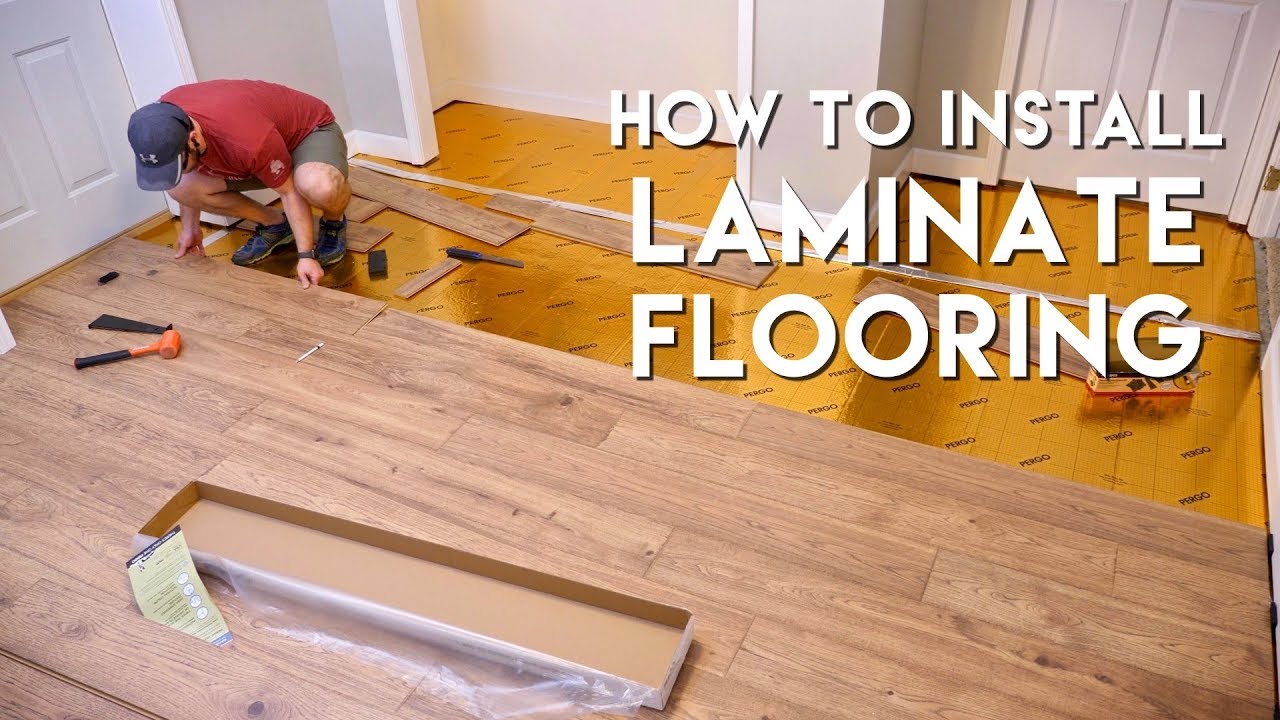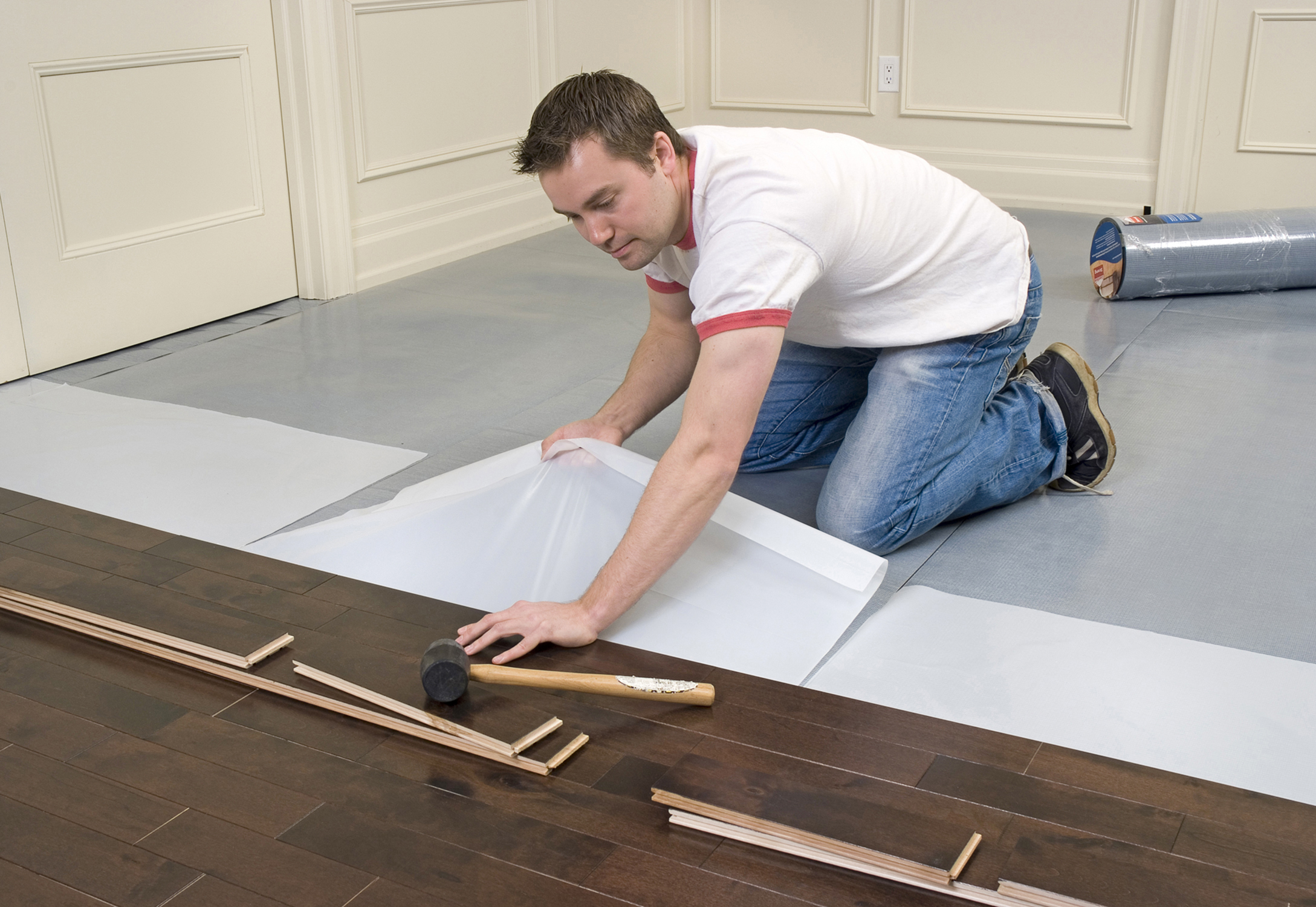Have you ever dreamt of replacing your drab concrete floors with the warmth and style of laminate flooring? The good news is, it’s entirely possible! But before you start ripping up your concrete slabs, there are some important factors to consider. Can laminate flooring be installed on concrete? Absolutely! But just like any home improvement project, there’s a right way and a wrong way to do it.

Image: www.bvg.co.in
This comprehensive guide will delve into the specifics of installing laminate flooring on concrete, addressing common concerns, providing expert tips, and equipping you with the knowledge to make an informed decision. Whether you’re a seasoned DIYer or a first-time home renovator, this article will illuminate the path to achieving your dream flooring transformation.
Why Consider Laminate Flooring on Concrete?
Laminate flooring offers a plethora of advantages that make it a popular choice for homeowners, especially when considering concrete subfloors:
Affordability
Compared to other flooring options like hardwood or tile, laminate flooring often boasts a more budget-friendly price point, making it an attractive choice for those on a budget.
Durability
Laminate flooring is built to withstand the test of time and heavy foot traffic, making it a perfect solution for high-traffic areas like kitchens, living rooms, or even your basement.

Image: www.hirerush.com
Variety of Styles
The world of laminate flooring is bursting with diverse styles and designs that mimic everything from natural wood to sleek modern tiles. You can easily find a style that complements your personal aesthetic and home décor.
Ease of Maintenance
Laminate flooring is a breeze to clean and maintain. Unlike hardwood or carpets, laminate doesn’t require specialized cleaning products or extensive upkeep.
Understanding the Installation Process
Installing laminate flooring on concrete isn’t rocket science, but it does involve a few key steps that need to be followed carefully to ensure a successful and long-lasting outcome.
1. Preparing the Concrete Subfloor
A strong and stable foundation is paramount for any flooring installation, especially for laminate flooring. Concrete subfloors often need some preparation before installation:
- Cleaning: Clean the concrete thoroughly to remove dirt, debris, and any existing coatings that might affect adhesion.
- Leveling: Concrete surfaces can often be uneven. Use a self-leveling compound to create a smooth, level surface for the laminate planks to sit on.
- Moisture Barrier: Concrete is prone to moisture issues. Apply a moisture barrier, like a moisture-resistant underlayment, to prevent moisture from migrating to the laminate flooring and causing damage.
2. Choosing the Right Underlayment
Laminate flooring requires an underlayment to provide cushioning and sound insulation. Here’s a breakdown of underlayment options:
- Foam Underlayment: Offer excellent cushioning and sound absorption. Great for minimizing noise and creating a more comfortable walking experience.
- Cork Underlayment: Provides natural cushioning and sound absorption, with a sustainable and environmentally-friendly alternative to traditional foam.
- Composite Underlayment: Combining different materials like foam and rubber, offers a balance of cushioning, moisture resistance, and sound insulation.
The type of underlayment you choose should depend on the specific needs of your space and the type of laminate flooring you’re installing.
3. Installing the Laminate Flooring
After preparing the subfloor and choosing the underlayment, it’s time to install the laminate flooring itself:
- Layout: Begin by carefully laying out the flooring planks in the desired direction. You can use a chalk line for guidance.
- First Row: Start with the first row, using a spacer for uniform gaps between planks. Cut planks as needed to fit the edges of the room.
- Click-and-Lock System: Most modern laminate flooring utilizes a click-and-lock system for easy installation. Securely connect the planks by clicking them together.
- Trimming: Carefully trim the planks around obstacles like doors, cabinets, and other fixtures.
- Expansion Gaps: Leave a small expansion gap (usually 1/4 inch) around the perimeter of the room to allow for expansion and contraction due to temperature changes.
4. Finishing Touches
Once the laminate flooring is installed, there are a few finishing touches to complete the project:
- Transition Strips: Use transition strips to create smooth transitions between the laminate flooring and other flooring types in different rooms.
- Baseboards: Install new baseboards or re-attach existing ones to create a finished look and hide any expansion gaps.
- Clean Up: Clean up any loose debris or dust from the installation, leaving your new floors gleaming.
The Importance of Moisture Control
Concrete is inherently porous and can absorb and retain moisture. This moisture can be a real problem for laminate flooring, which is typically susceptible to damage from water.
Here’s how to safeguard against moisture issues:
- Concrete Moisture Test: Before installing laminate flooring, always conduct a moisture test on the concrete subfloor using a moisture meter. This will determine if the moisture levels are within acceptable limits for laminate flooring.
- Moisture Barrier: A moisture barrier is essential for creating a barrier between the concrete and the laminate flooring. Options include polyethylene sheeting, moisture-resistant underlayment, or specialized vapor retarder paint.
- Proper Ventilation: Ensure adequate ventilation in the area where you’re installing laminate flooring. This is especially important if the basement or crawl space is below grade, reducing the risk of moisture buildup.
Considerations for Installing Laminate on Concrete
Here are a few additional considerations to keep in mind when installing laminate flooring on concrete:
- Floor Heating Systems: If you plan to install radiant floor heating, make sure to choose a laminate flooring compatible with this system. Ensure that the underlayment you choose is also suitable for radiant heat exposure.
- Cracking or Shifting Concrete: If your concrete subfloor is cracked or has signs of movement, address these issues before installing the laminate. Patching or resurfacing the concrete can help create a more stable foundation.
- Professional Installation: While DIY installation is an option, for larger projects or for those who are unsure of their skills, it’s often best to hire a professional flooring installer. They’ll have the experience and knowledge to ensure a proper and successful installation.
Can Laminate Flooring Be Installed On Concrete
Conclusion
Installing laminate flooring on concrete is a feasible and rewarding project that can transform your home’s interior. By carefully preparing the subfloor, choosing the right underlayment, and following the steps for proper installation, you can create beautiful and durable floors that will stand the test of time. Remember to prioritize moisture control and consider professional installation for larger projects. With a little planning and attention to detail, you can enjoy the beauty and value of laminate flooring for years to come.





